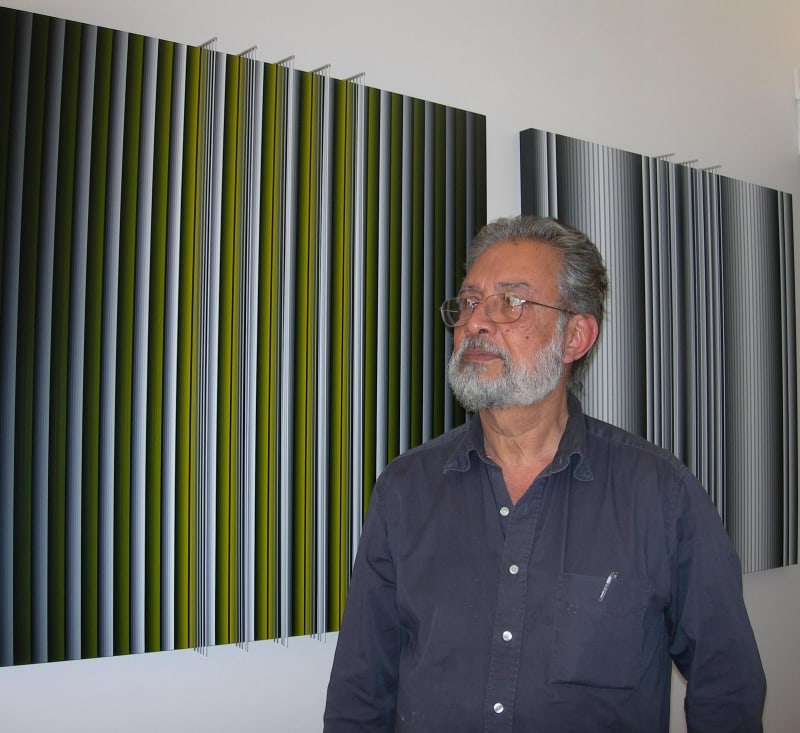Biography
Approaching the work of Dario Perez-Flores we are seduced by this enormous vastness. All his artistic life is dedicated to his inspiring work, the strict compositions, results of a long evolutionary process, pursuing the lively colours in contrast to the most radical ones – black and white.
His strong academic formation at the school of fine arts in Valence/Venezuela led Perez-Flores to participating in fairs of fine arts and experimental sculpture in Venezuela, his home country. Between 1961 and 1970 he exclusively made sculptures in Plexiglas with mobile elements, not coloured. This group of work accompanied him to Paris, and is reflected in his early kinetic works till 1976, the year, when his work first met colour.
When Perez-Flores settled in Paris in 1970 the kinetic and geometrical movement had already been well established by a group of Latin-Americans in the entourage of Denise René and her gallery: Le Parc, Sobrino, Soto, Cruz-Diez among others. Their works were aiming at a synthesis of the arts, geometrical forms playing within reflection, light and shadow, real agitation by either wind or electricity or virtual movement in the spectator’s perception. Elements merged in the artistic universe of these artists: colour and movement. It was the beginning of a creative explosion, and the Latin-Americans were right there, taking an important part in originating and developing the optical-kinetic art. This is the context of the long and deep research of Perez-Flores. He studied the scientific ‘Farbenlehre’ intensively, the theories of the Bauhaus and De Stijl. Based on his profound knowledge he started his solitary artistic career while maintaining his good relations with other members of the group.
For more than twenty years Perez-Flores’ work has evolved remarkably. His search for aesthetic events never fainted vis-à-vis the inconstant character of colour, line, plain or space and their ambiguousness. The guiding line to his work is not only the overwhelming presence of colour but his special technique –in design as well as in painting-: he creates a very delicate tissue of lines, mysteriously appearing, giving shape to the basic material and the pigments. In the middle of the eighties Perez-Flores thus started the creation of a large series of pictures and reliefs called ‘Prochromatiques’, in which the vertical elements are dominating, confirming his interest in colour –that originates back to 1976. These works prove not only his research in movement but in harmony of progressive colour degradation. The spatial sensation of the dynamic chromatics can be even more expressive than their kinetic effects.
